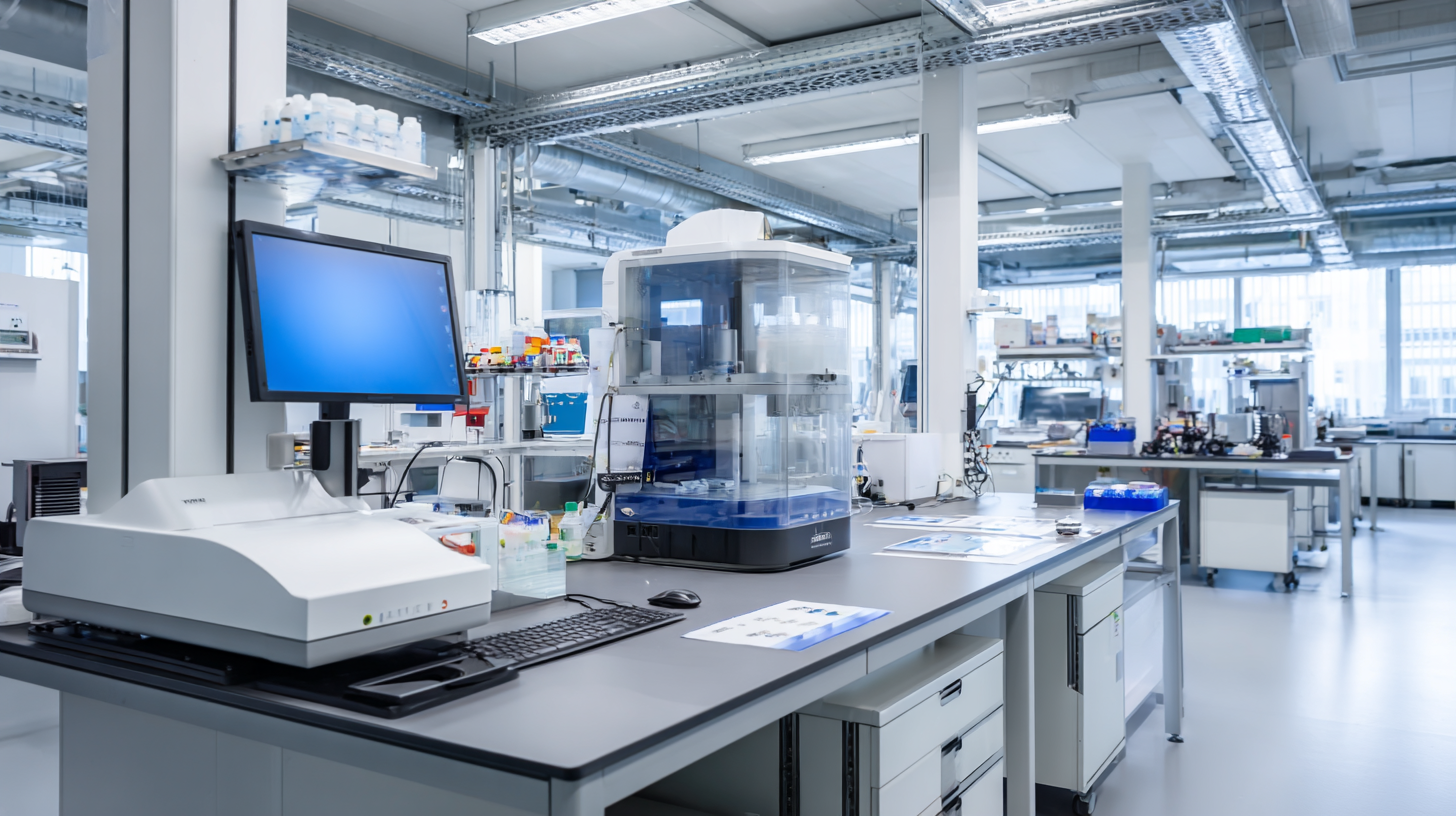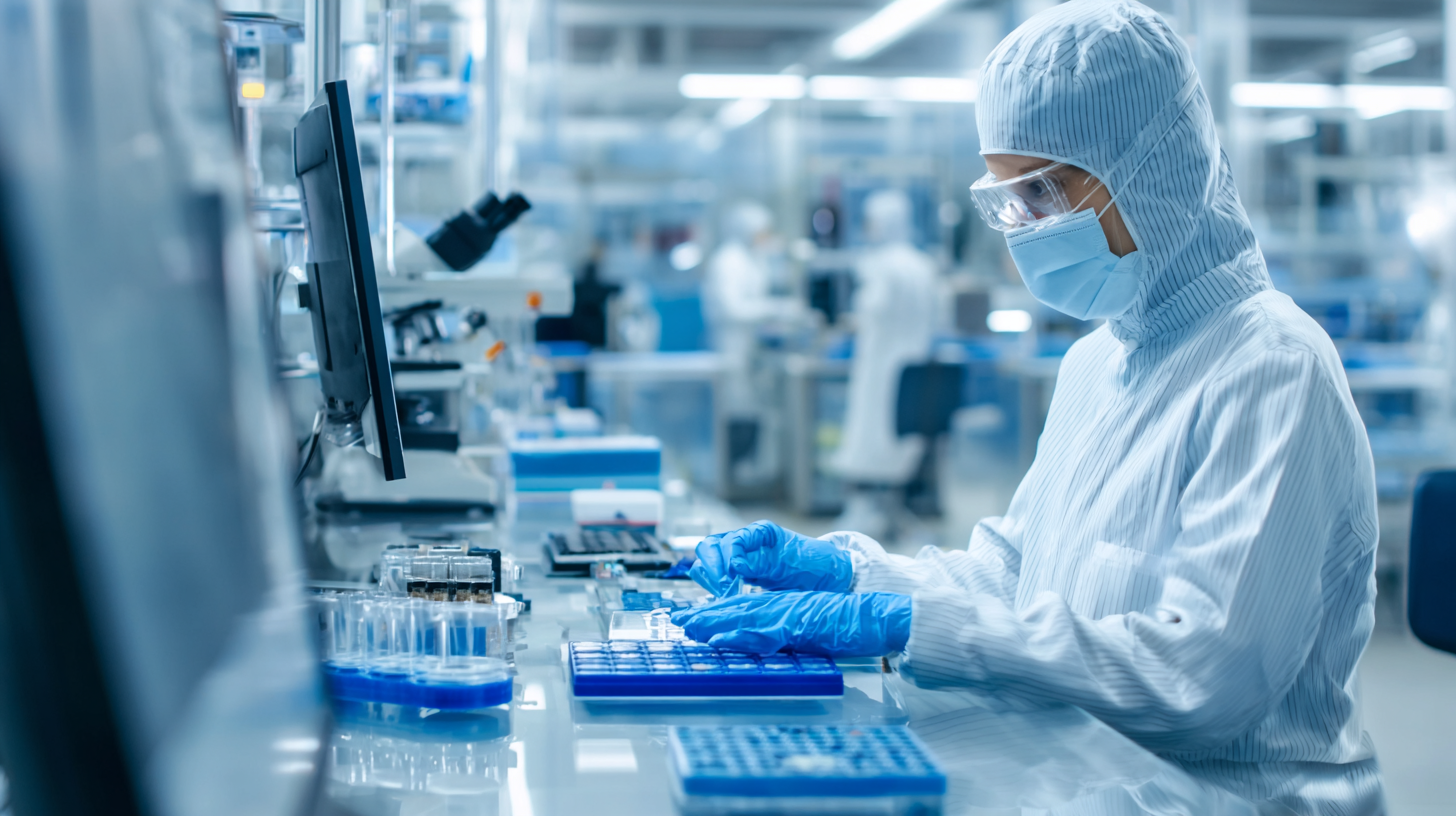

Leading Examples of Innovative Laboratory Systems for Global Buyers
In today's rapidly evolving technological landscape, the demand for cutting-edge laboratory systems has surged, driven by the need for enhanced efficiency, accuracy, and adaptability in research environments. According to a recent report by MarketsandMarkets, the global laboratory equipment market is expected to reach USD 68.9 billion by 2025, growing at a CAGR of 5.3%. This growth is fueled by the continuous advancements in automation and digitalization, which are revolutionizing traditional laboratory practices. Innovative laboratory systems not only streamline workflows but also integrate advanced data management and analysis capabilities, setting a new standard for research excellence. As global buyers seek the best solutions to meet their unique requirements, understanding the leading examples of these innovative systems becomes paramount for achieving laboratory efficiency and effectiveness in various scientific fields.

Understanding the Importance of Innovative Laboratory Systems in Global Markets
Innovative laboratory systems play a pivotal role in advancing scientific research and enhancing operational efficiency across global markets. With the ever-increasing demand for precision and speed in data collection and analysis, laboratories are investing in cutting-edge technologies that streamline processes and improve accuracy. Incorporating automation, real-time data integration, and advanced analytics not only increases productivity but also reduces the potential for human error. As a result, these systems not only support researchers in their quest for breakthroughs but also ensure that they meet international standards and regulatory requirements.
Furthermore, the importance of innovative laboratory systems extends to the collaborative nature of modern scientific endeavors. As research institutions and companies across different nations work together, the need for compatible and adaptable laboratory solutions becomes apparent. These systems must enable seamless data sharing and collaboration, fostering a global community of scientists who can address complex challenges effectively. By embracing innovation, laboratories can position themselves at the forefront of scientific discovery, contributing to advancements in fields such as healthcare, environmental science, and technology, ultimately benefiting society as a whole.
Innovative Laboratory Systems Adoption Across Global Markets
Key Features to Look for in Cutting-edge Laboratory Systems
Innovative laboratory systems are transforming research and development across various industries, enabling organizations to increase productivity, efficiency, and data integrity. In choosing cutting-edge laboratory systems, buyers should prioritize features that enhance automation and integration. According to the 2022 Laboratory Automation Market report by MarketsandMarkets, the global laboratory automation market is expected to grow from $4.6 billion in 2021 to $7.4 billion by 2026, indicating a rising demand for systems that streamline workflow. Opting for systems with advanced robotics and AI-driven analytics facilitates not only the reduction of human error but also accelerates the analysis process, allowing scientists to focus on critical decision-making.
Another key feature for global buyers is the compatibility of laboratory systems with existing technologies. A report from Frost & Sullivan highlights that 60% of laboratory managers prioritize seamless integration with current lab equipment and information management systems. Systems equipped with open architecture and modular design can adapt to evolving technologies and methodologies, making them highly valuable investments. Furthermore, real-time data sharing across platforms is crucial, enabling collaborative research efforts that are becoming increasingly prevalent in the scientific community, especially in fields such as biopharma and environmental science. By focusing on these key features, buyers can ensure their laboratory systems not only meet current demands but are also future-proof.
Case Studies: Successful Implementations of Innovative Lab Systems Worldwide
In recent years, innovative laboratory systems have revolutionized the way scientific research and experiments are conducted around the globe. Case studies from diverse regions highlight successful implementations that not only enhance operational efficiency but also promote sustainability. For instance, a biotechnology lab in Germany adopted a fully automated robotic system that streamlined sample processing, resulting in a 40% reduction in turnaround time while maintaining high accuracy. This investment not only improved productivity but also allowed researchers to focus on more complex tasks, demonstrating how cutting-edge technology can drive significant advancements in laboratory workflows.

Similarly, a university lab in Australia has implemented a cloud-based laboratory information management system (LIMS) that enables real-time data sharing among researchers and partners. This innovative approach facilitates collaboration, speeding up the research cycle significantly. By centralizing data storage and accessibility, the lab has vastly improved data integrity and traceability, essential factors in achieving reliable research outcomes. These successful case studies illustrate that adopting innovative lab systems can lead to substantial benefits, encouraging global buyers to invest in technology that enhances lab performance and contributes to scientific discovery.
Strategies for Selecting the Right Laboratory System for Your Needs
When selecting a laboratory system that suits your specific needs, it is crucial to assess your operational requirements and long-term goals. Start by identifying the essential features that align with your laboratory's objectives, such as data management capabilities, integration with existing protocols, and user-friendly interfaces. Involving key stakeholders early in the decision-making process will help ensure the system you choose accommodates various perspectives and functionality requirements, ultimately leading to enhanced team efficiency and collaboration.

Additionally, consider the scalability of the system you are evaluating. As research demands evolve, your laboratory may require an upgrade or expansion of its capabilities. Opt for systems that offer modular components, enabling you to add or modify features without disrupting workflow. Furthermore, prioritize vendors that provide robust customer support and training resources, ensuring your team can swiftly adapt to new technologies and optimize usage. By focusing on these key strategies, you can confidently select a laboratory system that not only meets immediate needs but also supports future growth and innovation.
Future Trends in Laboratory Systems: Innovations to Watch in the Coming Years
The landscape of laboratory systems is rapidly evolving, driven by technological advancements and increasing demand for efficiency and accuracy in scientific research. One notable trend is the integration of automation and artificial intelligence, which is expected to transform laboratory workflows.
According to a report by MarketsandMarkets, the global laboratory automation market is projected to reach $5.95 billion by 2025, growing at a CAGR of 7.4%. This growth is largely fueled by the need for enhanced productivity and reliability in testing processes, particularly within the pharmaceutical and biotechnology sectors.
Additionally, the adoption of cloud-based laboratory information management systems (LIMS) is on the rise, allowing for greater data accessibility and collaboration among researchers. A study from Acuity Market Intelligence indicates that the global LIMS market is expected to grow from $727 million in 2020 to over $1.62 billion by 2025, with a significant portion of this growth stemming from the increasing need for remote access to laboratory data amid the ongoing digital transformation. As laboratories embrace these innovative systems, the future holds great potential for enhanced operational efficiency and groundbreaking discoveries in science.





